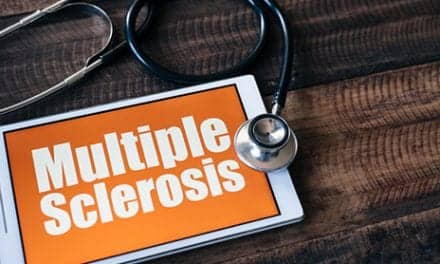Anne Swisher–professor at the West Virginia University School of Medicine–is working to address opioid misuse in an unconventional way: through physical therapy.
She and her colleagues have enhanced physical therapy instruction at WVU to emphasize the profession’s role in preventing and treating opioid use disorder, WVU notes in a media release.
“Students have different interests and passions within the profession, and they find their niche. No matter what their passion is, there is a way they can make a difference, whether it’s by preventing people from starting down the road of opioids–by minimizing pain medication and doing movement interventions–or whether it’s by helping people in the recovery process become healthier overall.”
— Anne Swisher, a researcher and director of scholarship in the Division of Physical Therapy
Swisher and her team devised a model to show doctor of physical therapy students how key topics in their curriculum–such as women’s health, pediatric care and sports therapy–could all address opioid use disorder in various ways.
Their model–which was published in Physical Therapy & Rehabilitation Journal–goes beyond musculoskeletal issues and addresses how physical therapists can assist people across the lifespan, from neonatal to hospice settings. It also illustrates how physical therapists can help improve human movement across what Swisher calls the “whole addiction spectrum,” the release continues.
“In our curriculum, our students learn about all of these different aspects–what to do with somebody who’s critically ill, the appropriate developmental milestones for children, how to help older people stay active–but it was really just a matter of connecting it all together,” she adds.
For instance, by making it easier for pregnant women to manage their aches and pains without opioids, physical therapists can help prevent neonatal abstinence syndrome in newborns. By combining special exercises with pharmacological treatment, they can reduce opioid use in patients after spinal surgery. And by promoting healthy physical activity in general, they can support people as they recover from opioid use disorder.
“I think it comes back to movement,” Swisher explains. “One of the catchphrases we like to use is, ‘Motion is lotion for the joints.’ And we know that regular physical activity releases the body’s own opioid chemicals. That’s the so-called ‘runner’s high’ that makes us feel good. Physical therapists can partner with people to work through their barriers to becoming more physically active.”
“Pain is always a perception,” Swisher adds. “It is always influenced by your own experiences, your motivation. If you get a tattoo to celebrate something monumental, you’re causing tissue damage, but you don’t perceive that as painful as putting your hand on the stove accidentally. We’re educating our students–and our colleagues–to understand that whole context working with pain.”
Incorporated Model Into DPT Rotations
As described in the study, Swisher and her team also incorporated their model into the clinical rotations that DPT students complete in rural Appalachian communities. As part of their rotations, the students choose a topic to develop into an educational program for a specific population in their community. They research issues specific to that community and consider those issues when designing the program.
All of the programs are stored electronically so that as the students make their way through their rotations, they can access each other’s programs and work with their own clinical supervisors to tailor them to the communities they’re serving, per the release.
“I think when we’re looking at any kind of healthcare provider going into these rural communities that are really struggling with addiction, you have to look at those psychosocial and emotional reasons why people might find a desire to escape some pain, whether they perceive it as physical pain or whether it becomes more of an emotional pain,” Swisher comments. “We have to consider how we as physical therapists interact with people as complex, bio-psychosocial individuals.”
Preparing the next generation of physical therapists to deal with opioid use disorder is important because “there’s such a huge issue here in Appalachia, especially in rural communities,” Swisher concludes.
“If you’re a physical therapist, you don’t need a special certification in opioid recovery to influence something across this whole addiction spectrum,” she says. “Just do the things that you do as a physical therapist, in your area.”
[Source(s): West Virginia University, EurekAlert]
Related Content:
We’ve Been Doing It Wrong: Chronic Pain in Children
Make PT First Again: TRICARE’s Plan for Pain Management
Opioids Prescribed More Often Than Recommended for New Chronic Pain Patients, NIH Study Suggests





